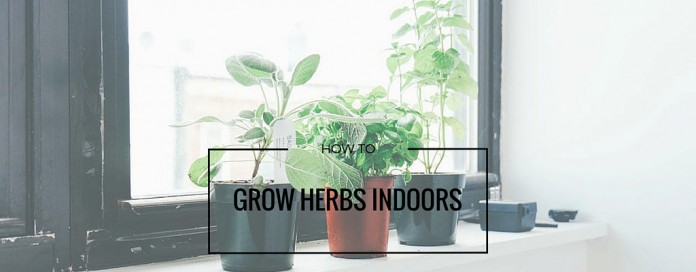Why stop gardening when the weather turns cooler? Growing herbs indoors is simple as long as you have the right tools and environment.
Why grow herbs indoors?
While there are some herbs that thrive better when planted outdoors, there are plenty of herbs that grow great in containers inside.
According to Penn State Extension, The University of Missouri Extension and The University of Illinois Extension the following herbs grow well indoors:
- Chives
- Horehound
- Winter savory
- Mint (can tolerate indirect sunlight)
- Rosemary (can tolerate indirect sunlight)
- Thyme (can tolerate indirect sunlight)
- Lemon balm (can tolerate low light)
- Tarragon (can tolerate low light)
- Oregano
- Basil
- Parsley
- Sage
- Marjoram
- Summer savory
Horseradish, fennel and lovage are examples of herbs that generally do not grow well in containers as their roots require more space.
What you’ll need to grow herbs indoors
Seeds or plants
You can buy herb seeds from hardware and home improvement stores and supercenters typically at the beginning of the growing season. You can also buy herb seeds online throughout the year.
Buying herb plants to transplant into containers is another option to consider. If you’re going this route, carefully inspect plants for disease and insect damage.
Location
An indoor area that receives at least six hours of direct sunlight. Herbs can be grown near a sunny southern window or 6 to 12 inches away from 40-watt, cool white fluorescent bulbs.
Herbs grown on windowsills should be rotated so that all sides receive sunlight to grow equally. The University of Missouri Extension suggests rotating containers every few days. Herbs that typically perform well with indirect sunlight include mint, bay, rosemary and thyme.

Containers need to have drainage holes. Clay is a better choice than plastic.
Potting medium
The University of Illinois Extension says that equal parts potting soil, peat moss and perlite/vermiculite should be used. Sand can also be used in the potting mix, according to The University of Missouri Extension. This mixture will aid water drainage in the containers.
Water
Water herbs when the potting mix becomes dry.
Getting started
West Virginia University Extension recommends placing a small amount of gravel at the bottom of containers before adding potting mix. This will help with drainage.
Plant seeds according to packet directions, or transplant herb plants normally into containers.
Maintaining your indoor herb garden
Group herbs together to create a humid environment, Penn State Extension says, but with enough space that air can still circulate through the plants. Another way to create a humid environment is by placing containers on a pan of moist pebbles or misting plants with water.
The daytime indoor temperature for herb growing should be between 65 and 70 degrees F. At night, the temperature should be between 55 and 60 degrees F, according to Penn State University Extension.
Another requirement for growing herbs indoors is air circulation. Use a fan to circulate air during the winter months. You don’t want to have a draft, so just slightly opening a window is an adjoining room can keep air flowing.
You’ll know that growing conditions aren’t ideal for your herbs if you notice that they have become spindly, have smaller leaves or do not produce a strong aroma.
Penn State University Extension recommends the following: Use a low-dose, water-soluble fertilizer once every two weeks. If insects are a problem for your herbs, spray plants with a solution of mild dishwashing soap and warm water on plants once a week. Use 1 or 2 tablespoons of soap for every gallon of water. Use less soap in the solution if leaves become discolored or are otherwise affected. If plants don’t return to normal, discontinue use.
When you notice that roots are growing through the drainage holes of containers, it’s time to repot them. Penn State University Extension says that the best time to repot herbs is during the spring.
 Using herbs
Using herbs
Before cooking with herbs, wash them off. Cut herbs regularly so that plants continue to grow.








 Using herbs
Using herbs


